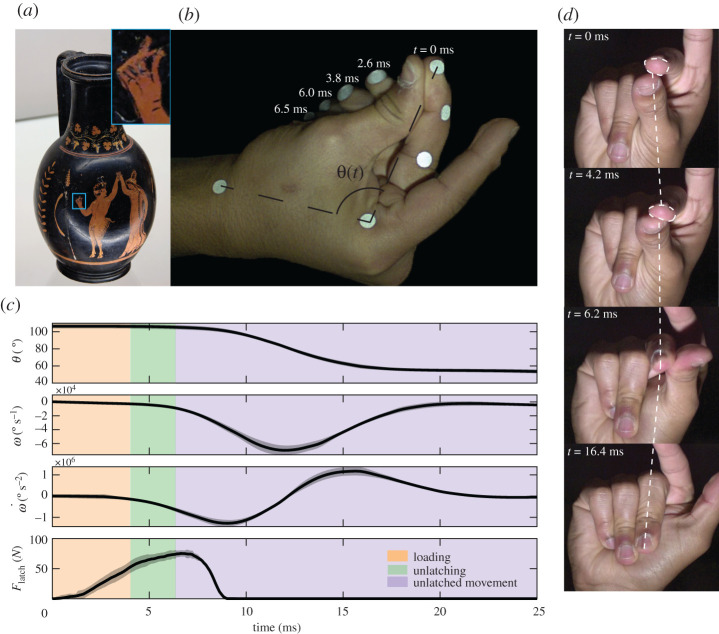Figure 1.
The finger snap is a three-phase, predominantly 1-D motion exhibiting high speeds and accelerations. (a) A piece of pottery from 320–310 BCE depicting Pan, the Greek god of the wild, dancing with a Manead with the hand curled in the shape of a finger snap. Images are public domain from [1]. (b) Composite image of the motion at different timestamps of the snap from a side view. (c) Kinematics and dynamics of the finger snap (n = 5). Angle measurements taken between points on wrist, knuckle and tip of finger. Force measurements taken via tactile pressure sensor placed between middle finger and thumb during snap, aligned such that force reading reaches 0 at peak acceleration. The shaded areas represent variance of measurement at each point in time. (d) Stills of a finger snap from the front showing the visible compression of the fingertip as energy is stored before being released and causing the nearly 1-D motion of both the thumb and the middle finger.

